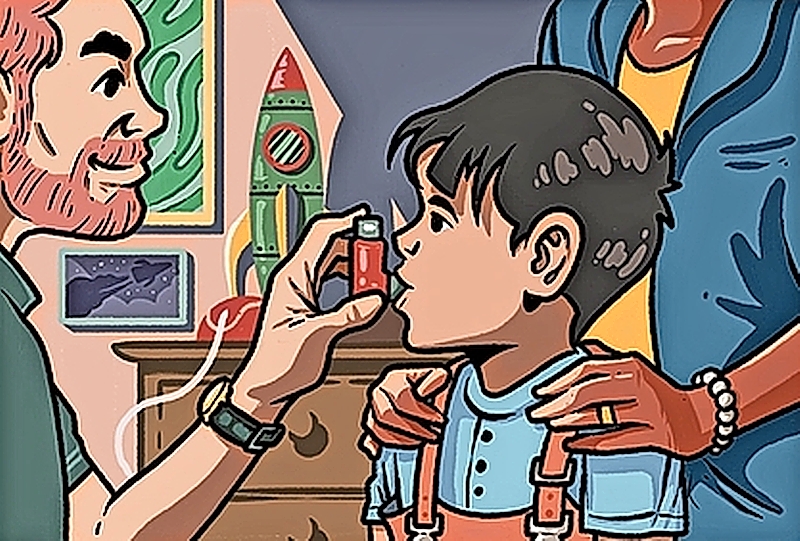Helping Kids Breathe Easier
By Mark Loehrke
Appears in the February 2022 issue.

When it comes to asthma sufferers, winter tends to be the cruelest season. Given common triggers like cold weather and viral illnesses, which are most prevalent this time of year, cherished activities like climbing a hill for a carefree sledding run or skating across a frozen pond are often stricken from the agenda for children dealing with asthma.
Winter, then, also tends to be the busy season for Janaki Paskaradevan, an attending physician in pulmonary and sleep medicine at Lurie Children’s Hospital of Chicago and an assistant professor of pediatrics at Northwestern University Feinberg School of Medicine. Paskaradevan, who also sees patients at Northwestern Medicine Central DuPage Hospital’s pediatric outpatient center in Winfield, has been working with pediatric asthma patients for about seven years, and therefore understands how important it is for children and their families to take extra care during the winter months.
“As children with asthma approach this time of year, it is good to review their medications and make sure that they are taking any controller medications as prescribed, make sure that they have their ‘rescue’ medicine, like albuterol, available/refilled and make an appointment for a check-in with the doctor who manages their asthma,” she says.
Paskaradevan says parents whose families haven’t dealt with asthma before should be on the lookout for signs that their children may be suffering from the affliction, especially this time of year. Some common asthma symptoms, especially this time of year, include: Coughing or wheezing (a whistling sound made when breathing) with exercise, wheezing with illness, and coughing or wheezing in the cold outside air.
“If parents notice their child doing any of these things, they should see a doctor to evaluate for asthma,” she advises.
While living with diagnosed asthma requires a number of adjustments and considerations for families, Paskaradevan says the science around the affliction has improved dramatically over the course of her career. Just last year, for instance, the Global Initiative for Asthma released updated guidelines that provided new insight on the types of medications and strategies that can be used to treat asthma, including MART therapy for particularly difficult cases. This involves using the same medication (a combination inhaler with both inhaled steroid and long-acting beta agonist) for both controller and rescue therapy. She also notes that the last two decades have seen the development of new medications for severe and hard-to-control asthma patients, such as injectable antibody-mediated drugs.
“More of these antibody medications for severe asthma have become available for use in younger children over the past few years, and have also gone from having to be administered in a clinical setting to having options for injections that can be given in the home,” she says. “This has been game changing for children with severe and difficult-to-control asthma.”
In other words, these kinds of advancements just may take some of the cruelty out of winter for young asthma sufferers.
Photo courtesy Ann & Robert H. Lurie Children’s Hospital of Chicago


